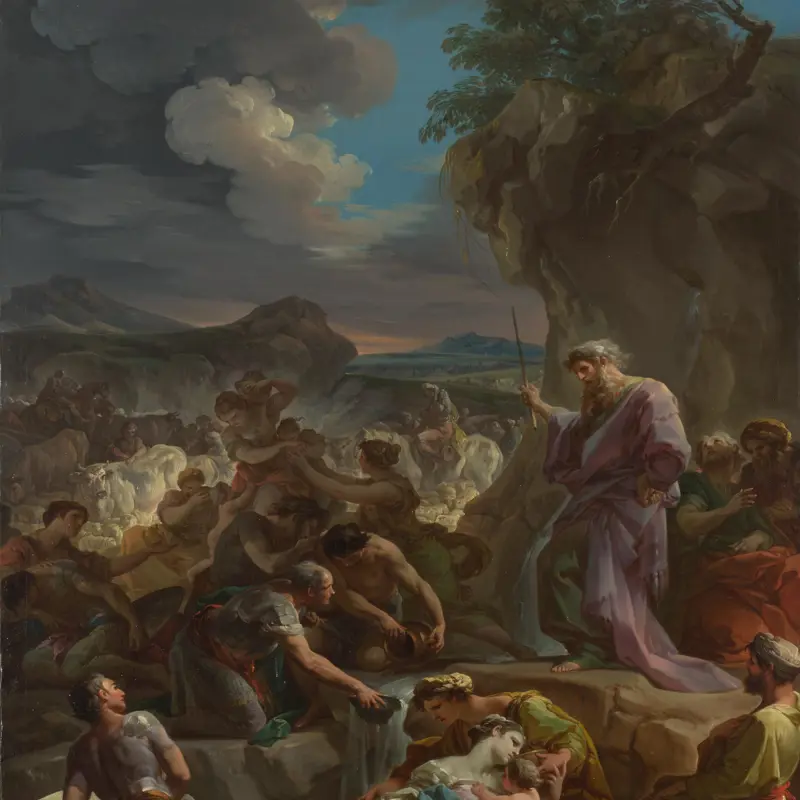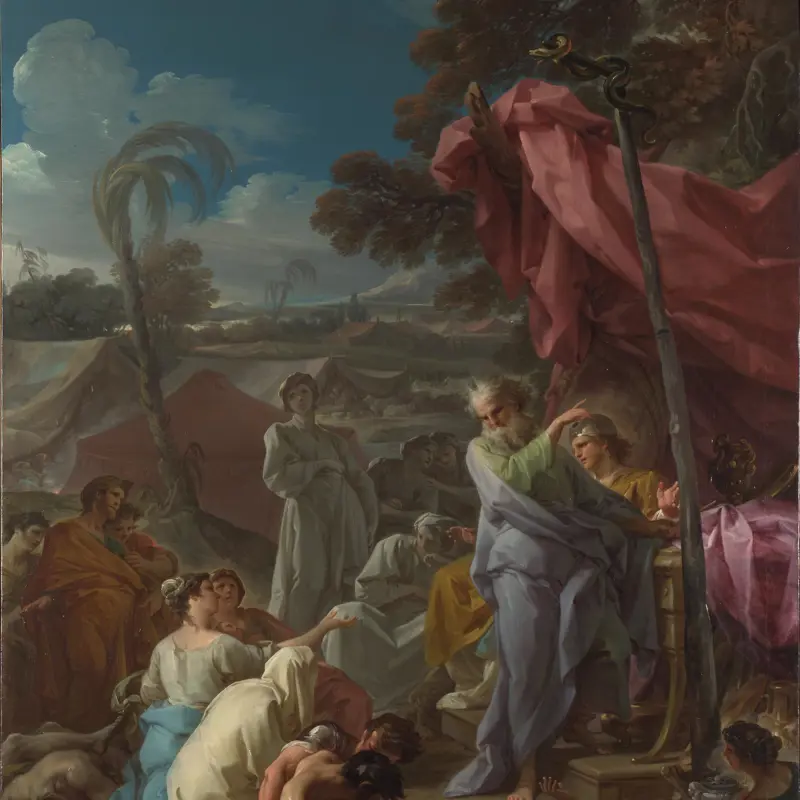Corrado Giaquinto, 'Apotheosis of the Spanish (?) Monarchy (?)', about 1751
About the work
Overview
This preparatory sketch for a ceiling shows a sky with classical figures arranged on clouds. At the top is Jupiter – the chief deity – holding a crown and accompanied by an eagle clutching a thunderbolt (his attributes). Beside him is Juno, his wife. Below them to the left are Venus and Cupid, and Bacchus reclining. To their right, Minerva presents a woman holding a spear to Jupiter: she may be a personification of Spain. Lower and to the centre, Hercules is defeating the multi-headed water monster Hydra with his club. His prominent position is due to his association with the Spanish monarchy – one of Hercules’s labours was to place columns in Gibraltar, marking the limit of what would later become the Spanish Empire.
The ceiling painting is now in the Palazzo Rondinini-Sanseverino, Rome, but it was originally in the Palazzo Santa Croce in Palermo. The palace belonged to the Celesti family: they may have commissioned this allegory of the Spanish monarchy since the Spanish Bourbon king Charles III, ruler of the Kingdoms of Sicily and Naples, was crowned in Palermo.
Key facts
Details
- Full title
- Apotheosis of the Spanish (?) Monarchy (?)
- Artist
- Corrado Giaquinto
- Artist dates
- 1703 - 1766
- Date made
- about 1751
- Medium and support
- oil on canvas
- Dimensions
- 96.5 × 43.2 cm
- Acquisition credit
- Bought, 1954
- Inventory number
- NG6229
- Location
- Not on display
- Collection
- Main Collection
Provenance
Additional information
This painting is included in a list of works with incomplete provenance from 1933–1945; for more information see Whereabouts of paintings 1933–1945.
Text extracted from the ‘Provenance’ section of the catalogue entry in Michael Levey, ‘National Gallery Catalogues: The Seventeenth and Eighteenth Century Italian Schools’, London 1986; for further information, see the full catalogue entry.
Bibliography
-
1955The National Gallery, The National Gallery: 1938-1954, London 1955
-
1956Levey, Michael, National Gallery Catalogues: The Eighteenth Century Italian Schools, London 1956
-
1986Levey, Michael, National Gallery Catalogues: The Seventeenth and Eighteenth Century Italian Schools, London 1986
-
2001
C. Baker and T. Henry, The National Gallery: Complete Illustrated Catalogue, London 2001
About this record
If you know more about this work or have spotted an error, please contact us. Please note that exhibition histories are listed from 2009 onwards. Bibliographies may not be complete; more comprehensive information is available in the National Gallery Library.


